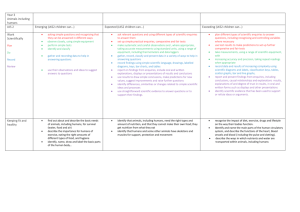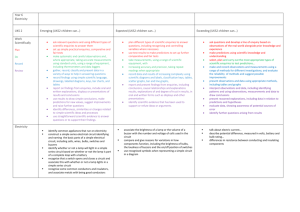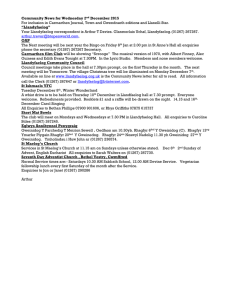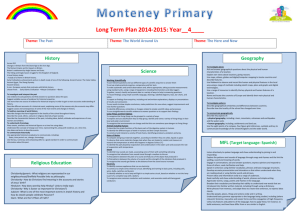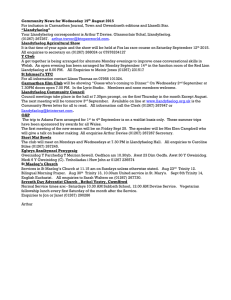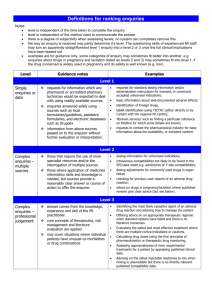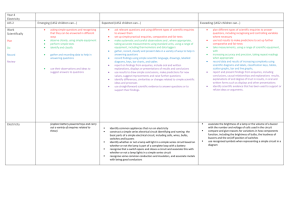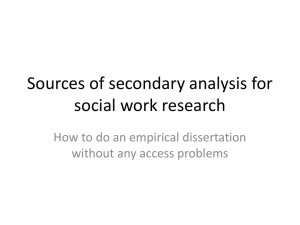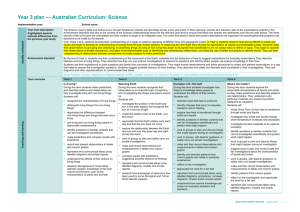Year 6 Evolution and inheritance grid
advertisement
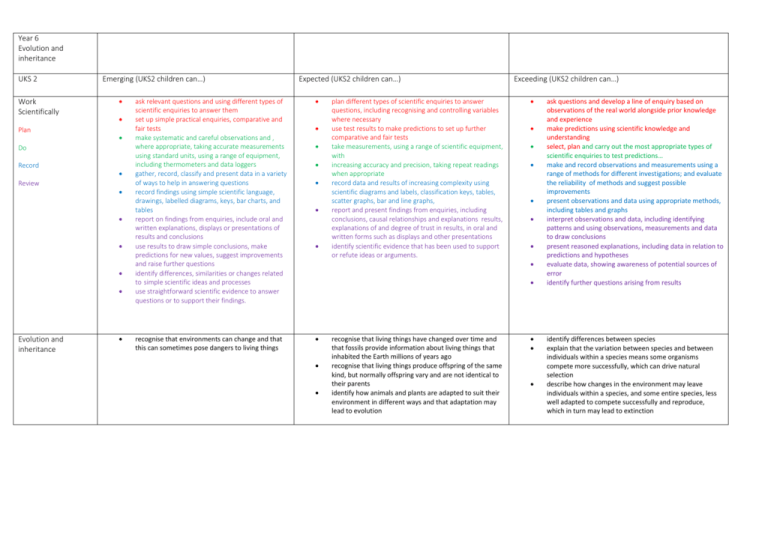
Year 6 Evolution and inheritance UKS 2 Work Scientifically Plan Emerging (UKS2 children can…) Do Record Review Evolution and inheritance Expected (UKS2 children can…) ask relevant questions and using different types of scientific enquiries to answer them set up simple practical enquiries, comparative and fair tests make systematic and careful observations and , where appropriate, taking accurate measurements using standard units, using a range of equipment, including thermometers and data loggers gather, record, classify and present data in a variety of ways to help in answering questions record findings using simple scientific language, drawings, labelled diagrams, keys, bar charts, and tables report on findings from enquiries, include oral and written explanations, displays or presentations of results and conclusions use results to draw simple conclusions, make predictions for new values, suggest improvements and raise further questions identify differences, similarities or changes related to simple scientific ideas and processes use straightforward scientific evidence to answer questions or to support their findings. recognise that environments can change and that this can sometimes pose dangers to living things plan different types of scientific enquiries to answer questions, including recognising and controlling variables where necessary use test results to make predictions to set up further comparative and fair tests take measurements, using a range of scientific equipment, with increasing accuracy and precision, taking repeat readings when appropriate record data and results of increasing complexity using scientific diagrams and labels, classification keys, tables, scatter graphs, bar and line graphs, report and present findings from enquiries, including conclusions, causal relationships and explanations results, explanations of and degree of trust in results, in oral and written forms such as displays and other presentations identify scientific evidence that has been used to support or refute ideas or arguments. Exceeding (UKS2 children can…) recognise that living things have changed over time and that fossils provide information about living things that inhabited the Earth millions of years ago recognise that living things produce offspring of the same kind, but normally offspring vary and are not identical to their parents identify how animals and plants are adapted to suit their environment in different ways and that adaptation may lead to evolution ask questions and develop a line of enquiry based on observations of the real world alongside prior knowledge and experience make predictions using scientific knowledge and understanding select, plan and carry out the most appropriate types of scientific enquiries to test predictions… make and record observations and measurements using a range of methods for different investigations; and evaluate the reliability of methods and suggest possible improvements present observations and data using appropriate methods, including tables and graphs interpret observations and data, including identifying patterns and using observations, measurements and data to draw conclusions present reasoned explanations, including data in relation to predictions and hypotheses evaluate data, showing awareness of potential sources of error identify further questions arising from results identify differences between species explain that the variation between species and between individuals within a species means some organisms compete more successfully, which can drive natural selection describe how changes in the environment may leave individuals within a species, and some entire species, less well adapted to compete successfully and reproduce, which in turn may lead to extinction
